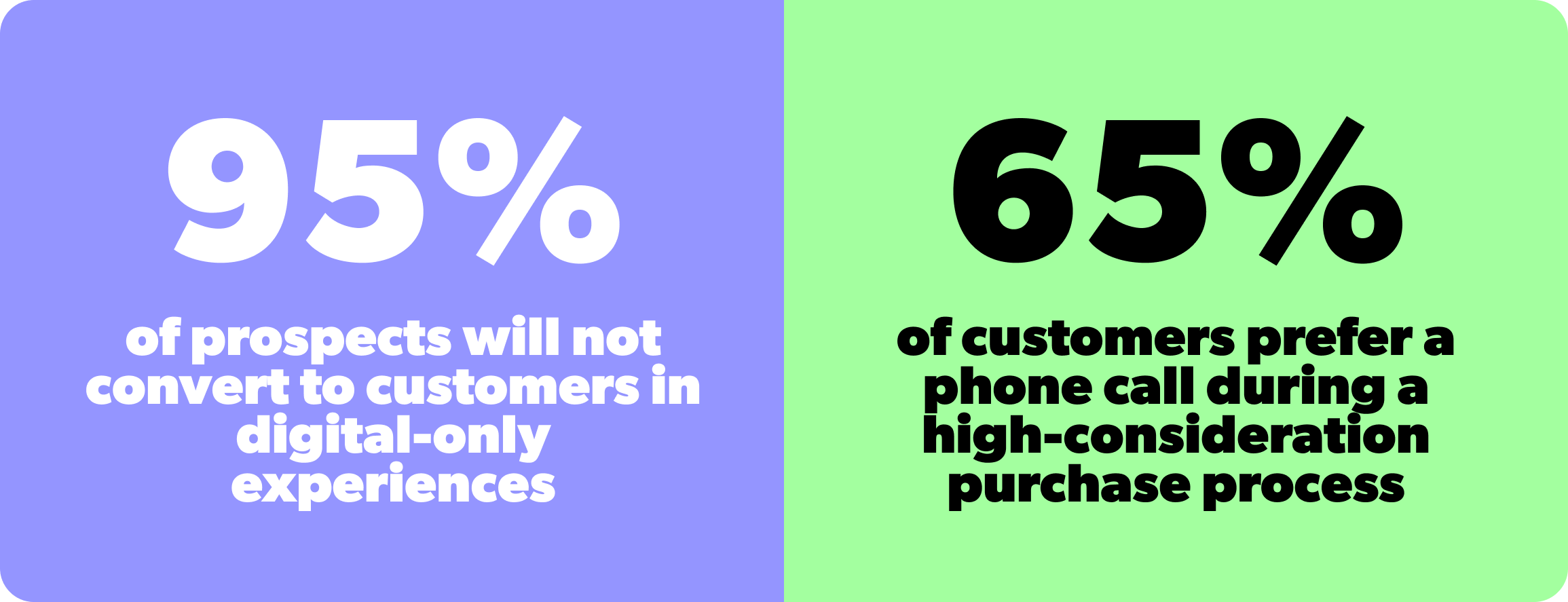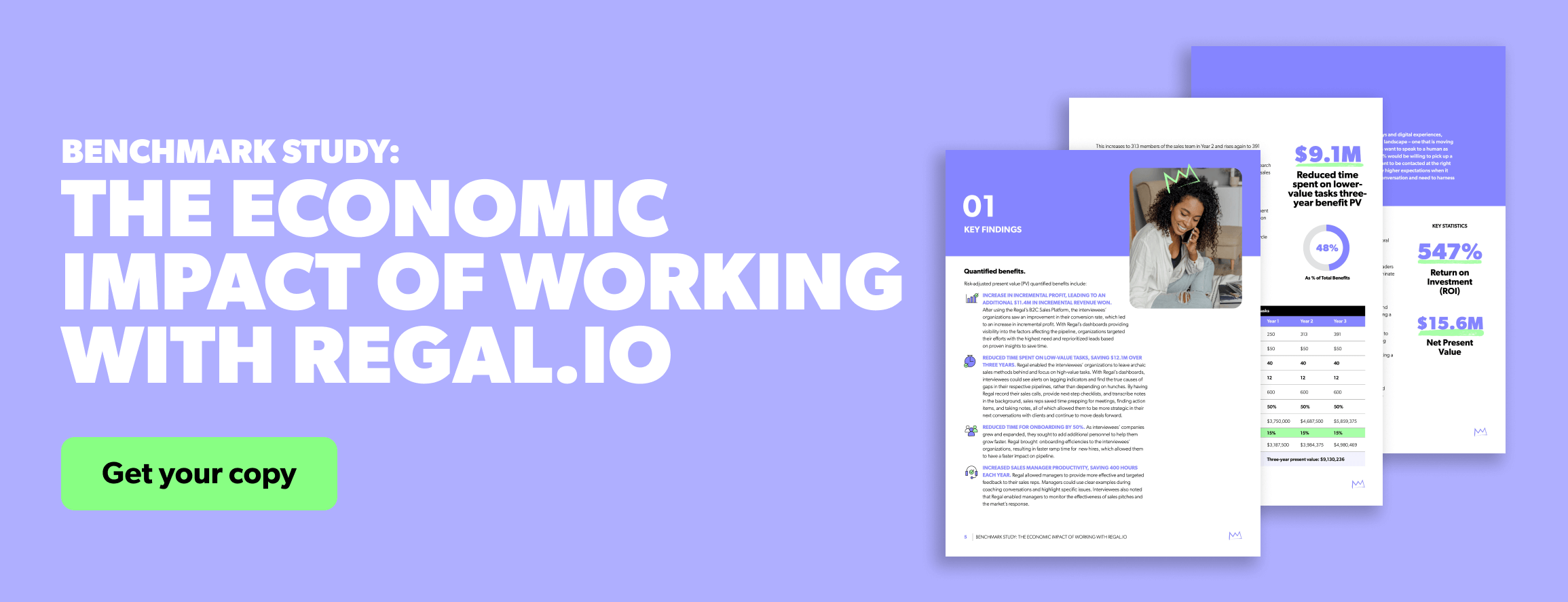Outbound contact centers know that the key to converting customers is to have great conversations with them. Particularly in high-consideration industries — those where purchasing decisions are marked by careful deliberation — customers are looking for the brand to provide comprehensive information and personalized assistance to facilitate informed decisions.
TechHQ takes a closer look at the five most common mistakes at outbound contact centers.
1. Collecting phone numbers but not customer behaviors
Does this sound familiar? Lead comes in, you add them to a segment called “new prospects”, and you put them in a campaign that calls them X times a day for Y days.
Your data and tech strategy will dictate your outbound capabilities.
When all you have is a phone number, you are limited in how you could possibly personalize outbound plays. When your tech can’t capture prospect/customer behaviors in real time and match them to a unified customer profile, you are limited in how you can proactively engage the customer. It’s time to review both your data and tech strategy.
2. Reaching out when it’s easy for the contact center, not when it’s good for the customer
Engaging customers at key moments ensures that brands can provide the desired information and alleviate any concerns, helping to guide customers toward a confident purchase decision.
Getting this timing wrong puts the sale at risk – reach out too early, and customers may lose interest due to a lack of preparedness to make a decision; too late, and they might have already committed to a competitor. And if you’re reaching out when your staffing is right, that’s never going to be right for the customer.
3. Dialing More (or Faster) rather than prioritizing personalization
Legacy Contact Center as a Service (CCaaS) software often includes a progressive or predictive dialer. Many outbound contact centers fall into the trap of using these features to call customers more often to try to get them to answer. Prioritizing speed and quantity of calls makes it very challenging to provide a personalized experience.
While these dialing modes might be efficient or let you call more people, there are much better ways to lift engagement rates.
4. Using the same message with every customer instead of the right message
Each prospect and customer has a different history and different aims. So why would the same script work for all of them? While it may be easiest to use the same script every time, even small customizations go a long way.
Start easy – if the customer has already indicated their preference online or told your team what they are looking for, don’t start from scratch. It will infuriate customers. And as you want to get more advances with your customized messaging, Branded Caller ID on your calls, location-specific opening lines, reminding the customer you know what they did with your brand or CS team, and demonstrating helpful understanding of their problem or objection before they bring it up are all good ways to get away from one staid message.
5. Relying on manual agent processes instead of AI-enabled solutions
Not too long ago, sales agents were entirely responsible for crafting every interaction with prospects. They would research the customer, decide what to say, the best time to say it, and when and how to follow up to maximize success. Now, thanks to significant advancements in artificial intelligence (AI), much of their work can be enhanced.
Virtual assistants can reach out to prospects the moment they show interest in your brand and craft natural, human-like follow-ups based on their intent, all with zero headcount. AI-generated message scripts can guide agents through calls once they do connect with a customer. AI Conversation Intelligence can enhance coaching, and automate the next best action.
Due to the sheer volume of customers and complexity of data involved, utilizing AI-driven solutions is now a necessity.
AI helps sales teams gain greater process efficiency, target and message accuracy, and more granular personalization. Doing so frees up agents from low-value, manual tasks, allowing them to pursue strategic ways to engage customers with targeted and personalized outreach.
Regal understands because they were in your shoes
The Regal founders also used legacy CCaaS dialers at previous companies, which led them to spam customers with multiple unknown calls. So they developed a new playbook to build the highest-answering, best-converting outbound calling funnel.
|
THE OLD WAY |
THE REGAL WAY |
|
| HOW TO CONNECT WITH CUSTOMERS | Collect phone number | Understand customer actions and aims |
| Add phone number to ‘All Leads’ list | Track what customer did and asked | |
| Call ‘All Leads’ list 3x/day for 3 days | Reach out at key moments | |
| Dial when its efficient for me | Call when its good for you | |
| Use unknown number | Call from a number/name you recognize | |
| Redial until you block me | Text if you don’t answer | |
| HOW TO CONVERT CUSTOMERS | Don’t worry about context | Have context for call |
| Same message no matter what | Make sure I’m talking to your needs | |
| Forget the call immediately | Record and transcribe calls | |
| Don’t review what customers said | Use what customers said to follow up | |
| Ignore managers who try to help | Use coaching to improve | |
| Repeat, repeat, repeat… | Test, test, test… |
While legacy CCaaS software platforms make it difficult to modernize your outbound strategies, Regal.io was built specifically to enable their new customer-centric approach. And ultimately, Regal.io customers have reported a 547% ROI.
William Lucas, the Senior Manager at online tutoring platform Club Z!, said:
“Regal.io instantly doubled our answer rates and improved productivity of our sales team. We have been able to consolidate what we used to do in three separate systems all into one place while personalizing our outreach to prospects.”
To learn more about how Regal can help your outbound contact center hit your growth goals, request a demo of its platform here.











